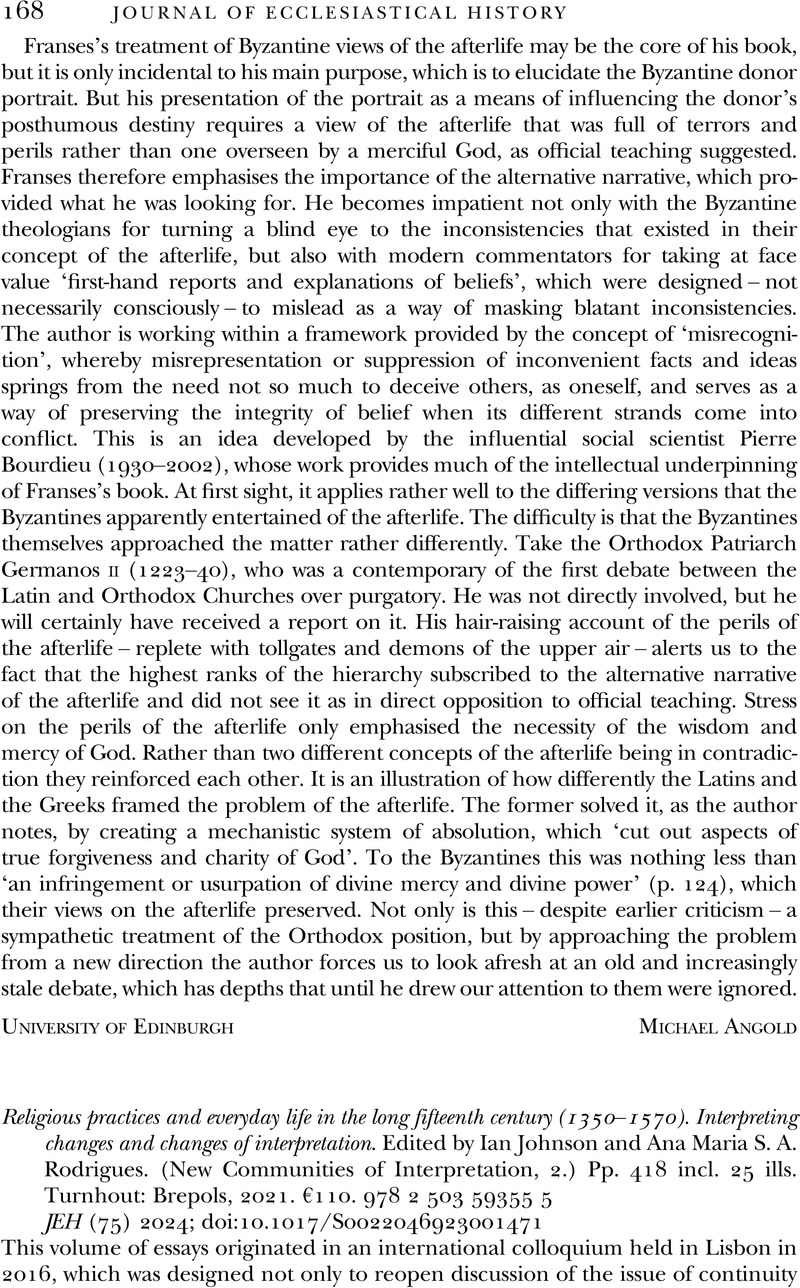No CrossRef data available.
Article contents
Religious practices and everyday life in the long fifteenth century (1350–1570). Interpreting changes and changes of interpretation. Edited by Ian Johnson and Ana Maria S. A. Rodrigues. (New Communities of Interpretation, 2.) Pp. 418 incl. 25 ills. Turnhout: Brepols, 2021. €110. 978 2 503 59355 5
Review products
Religious practices and everyday life in the long fifteenth century (1350–1570). Interpreting changes and changes of interpretation. Edited by Ian Johnson and Ana Maria S. A. Rodrigues. (New Communities of Interpretation, 2.) Pp. 418 incl. 25 ills. Turnhout: Brepols, 2021. €110. 978 2 503 59355 5
Published online by Cambridge University Press: 20 December 2023
Abstract
An abstract is not available for this content so a preview has been provided. Please use the Get access link above for information on how to access this content.

- Type
- Reviews
- Information
- Copyright
- Copyright © Cambridge University Press 2023



